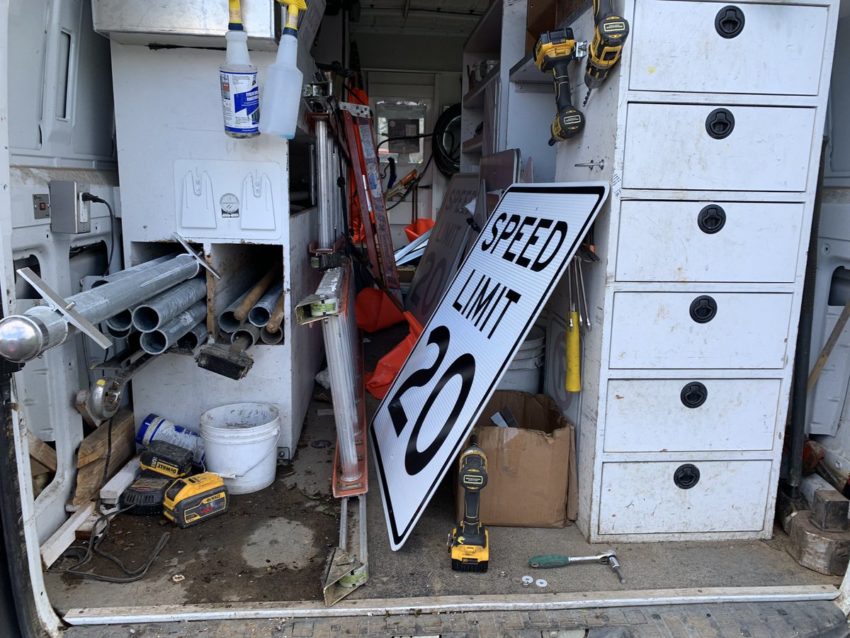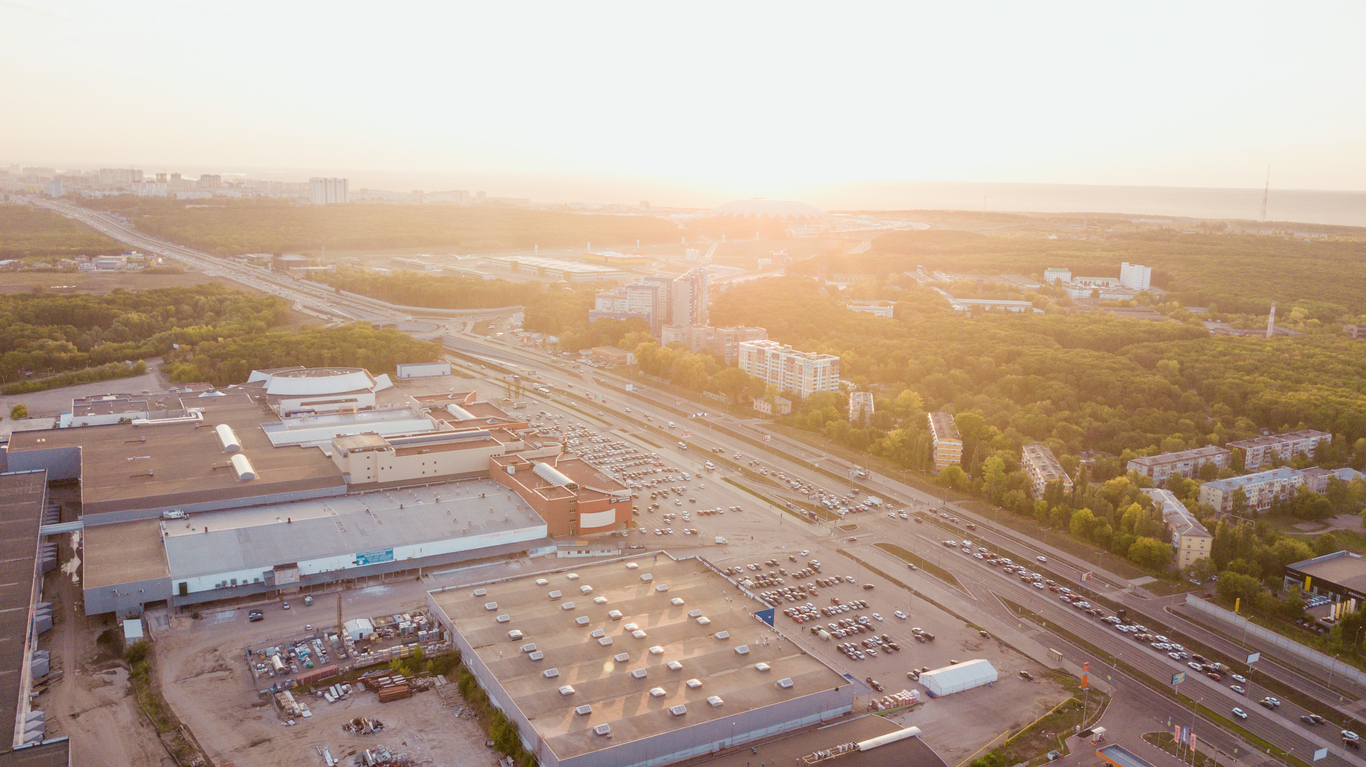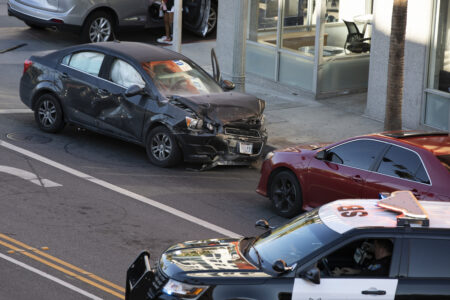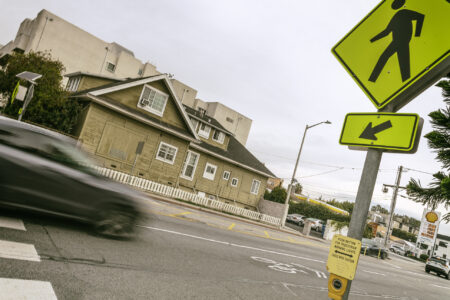
Share On Social!
Speed—not speeding—is the most critical factor in the severity of a crash.
However, due to state preemption of local authority, many cities can’t lower speed limits without lengthy state studies and procedures.
Some cities, though, are still pushing to drop speeds, and uplift safety.
Lower Speed Limits, Safer Roads
Traffic crashes are one of the leading causes of preventable death in the U.S.
In 2017, speeding accounted for more than one fourth of all traffic fatalities, according to the National Highway Traffic Safety Administration (NHTSA). Check out this interactive map of over 59,000 speeding fatalities between 2010 and 2015, thanks to the National Coalition for Safer Roads (NCSR) and the Vision Zero Network.
A 5 mph increase in the maximum speed limit was associated with an 8% increase in the fatality rate on interstates and freeways, according to a new study by the Insurance Institute for Highway Safety.
Speed is the most important factor to regulate to improve pedestrian safety.
Pedestrians have a 90% survival rate if they are hit by a vehicle going 20 miles per hour, compared to only a 10% survival rate if hit by a vehicle going 40 mph.
Decreasing the speed limit from 30 mph to 25 mph would increase a pedestrian’s odds of surviving a collision by 43%, according to one source, and could reduce disparities in pedestrian fatalities.
Improving safety can also increase physical activity and improve health, particularly in Latino neighborhoods where kids face unsafe walking conditions, like speeding cars, according to a Salud America! Research Review
A Win for Lower Speeds: Weymouth, Massachusetts (3.3% Latino)
In November 2018, a minivan struck a 75-year-old woman as she crossed Park Avenue in Weymouth, Massachusetts. She later died.
The road is near a densely populated residential neighborhood and two schools. Neighbors and students often walk the street. Many complained about speeding vehicles.
In fact, even with a 40 mph speed limit, 85% of the traffic moves 42 mph on Park Avenue, according to Jessica Trufant in The Patriot Ledger.

Because it is a state road, in which the state preempts local authority, the city must obtain state approval for speed limit changes.
So they sought state approval.
The city mayor, police, and other advocates pushed for a speed limit closer to 30 mph.
In April 2019, the Massachusetts Department of Transportation approved a lowering from 40 to 35 mph.
A Win for Lower Speeds: Portland, Oregon (9.7% Latino)
Portland has spent the past year removing 25 mph signs. They put up 2,100 new 20 mph signs across the city in their place.
Why?
In April 2018, Portland lowered the speed limit from 25 mph to 20 mph on all its estimated 3,000 miles of residential streets without the state’s traditionally lengthy process.
However, due to state preemption of city authority, this was only possible after a 2017 bill allowed the Portland City Council to reduce speed limits.
Other cities in Oregon do not yet have that authority.
“It’s really our view, unfortunate, that it requires an act of state government, at the request of the city, to make those smart safety adjustments to our speed limits,” Portland Bureau of Transportation Spokesman Dylan Rivera said according to Andrew Theen in The Oregonian.
Currently, Oregon lawmakers are considering a bill (SB 558) that would give all cities in Oregon the power to lower speed limits on residential streets.
A Loss for Lower Speeds: Bee Cave, Texas (13.8% Latino)
Bee Cave is a small town in Texas with less than 7,000 people. Yet nearly 50,000 vehicles travel through the city every day.
Why?
Four main state highways run through the city.
Of 268 total crashes in 2018, approximately 185 occurred on just one of those state highways, said Bee Cave Police Chief Gary Miller, according to Brian Rash with Community Impact.
Bee Cave city leaders don’t have authority to lower the speed limit on a state road without a lengthy traffic study and survey.
But they tried anyway. In March 2019, the Bee Cave City Council considered a resolution to ask the Texas Department of Transportation two things:
- Perform a traffic survey and speed study on state roads in Bee Cave to protect the health, safety and welfare of its citizens; and
- Create a new speed limit of 50 mph or less on state roads within city limits.
 The resolution garnered support from Miller and a local traffic safety advocacy group.
The resolution garnered support from Miller and a local traffic safety advocacy group.
However, it failed on a 3-3 vote.
Some emerging state legislation could help (a little).
Texas lawmakers are currently considering a bill (HB 1287) to lower the default speed limit from 30 to 25 mph on residential streets. This would benefit many cities, although it wouldn’t solve Bee Cave’s issues.
Another bill under consideration (HB 2814) would establish safety corridors in which traffic violations carry increased fines. This bill could disproportionately burden some families. Overpolicing and costly fines can have detrimental impacts in minority communities.
More Action to Lower Speeds
Other cities are considering resolutions to lower speed limits.
- After the death of 67 year-old Kathryn Flom on March 11, East Allen Township officials are again asking the Pennsylvania Department of Transportation to reduce the speed on a segment of Airport Road.
- Due to growing development, Marion City Council voted to formally ask the Iowa Department of Transportation to reduce the speed on Highway 13.
- Because counties do not have the authority to set speed limits in Ohio, the Tuscarawas County Commissioners passed a resolution requesting the director of the Ohio Department of Transportation to lower the speed limit on one section of E. State Road.
- The town of New Castle, Colorado and the Roaring Fork Transportation Authority are asking state highway officials to lower the speed limit on a highway near the park-and-ride lot.
- Residents in Bainbridge Island, Washington have petitioned the city to reduce the speed limit on a short stretch of Fletcher Bay Road.
- Nashville Metropolitan Council passed an ordinance directing the Metropolitan Department of Public Works to complete a thorough analysis for the reduction of vehicular speed limits on neighborhood classified streets and to submit a written feasibility report with implementation recommendations.
- Fort Worth City Council voted in support of House Bill 1287, to establish a statewide default speed limit of 25 mph in neighborhoods.
Do you support lower speeds in your city?
If so, share this article with health and pedestrian safety advocates in your community.
Tell your state and local representatives if you don’t support state preemption of local authority regarding speed limits.
Explore More:
Transportation & MobilityBy The Numbers
27
percent
of Latinos rely on public transit (compared to 14% of whites).



